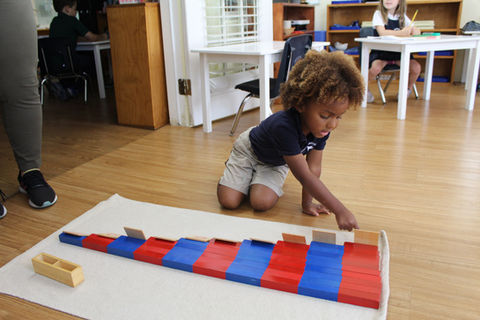Early Childhood
3 - 6 years old
Casa de Bambini translates to The Children’s House. A Montessori pre-school classroom is a "living room" comprised of five main areas. The children are presented lessons with activities from among the self-correcting materials displayed on open shelves and work either on a table or floor space. The outdoor area is an extension of the classroom, offering children an opportunity to work responsibly with friends while promoting social growth and development.
Over a period of time, children are able to choose work independently and become engaged and focused. The classroom develops into a "normalized community" as children work with high concentration and few interruptions.
Normalization is the process whereby a child moves from being undisciplined to self-disciplined, disordered to ordered and distracted to focused through work in the environment. The process occurs through repeated work with materials that captivate the child's attention. For some children this inner change may take place quite suddenly, leading to deep concentration.
Take a peek inside the Early Childhood Classroom...

The Early Childhood Program is designed for children between the ages of 3-years to 6-years-old with a Lead Teacher and Assistant (1 to 11 ratio). The mixed-age grouping in our classrooms allow younger children to learn from older peers and older children to reinforce their learning by teaching younger ones. This setup mirrors natural social dynamics and promotes collaboration, empathy, and leadership skills.
Our Montessori Early Childhood teachers hold an American Montessori Society (AMS) certification at the Early Childhood Level (3-6) level. Each classroom has one certified teacher, one assistant teacher, and a teacher's aide that floats between our Toddler rooms.
.png)







